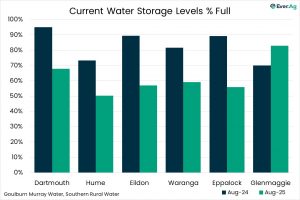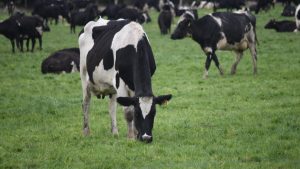
China’s ag production exceeds $1.1 trillion – which makes Australia’s two year’s of $80b look a tad light on – and Russia’s cereal output feeds over two billion people worldwide alone.
Half of the world’s sugarcane comes from Brazil, the Netherlands exports the most eggs and the 70 per cent of Australian beef production that is shipped overseas is but a drop in the ocean of global food exports.
These are just a handful of the fascinating findings from a new report from the United States’ private University of Potomac in Washington, which ranked the most produced agricultural commodities by country and the world’s largest food producers and exporters, drawing on United Nations data and government and banking economic statistics from throughout the globe.
A worldwide pandemic topped off with the war in Ukraine involving two countries which are among the largest agriculture producers in the world has shone a torch on where food comes from in a way never before seen.
Underpinning the disruption to world food markets is elevated climate change concerns, and demands.
This work aimed to address some of the uncertainty about the future of food production and in the process revealed some very interesting insights for those in the business of farming.
Key findings
The most widely cultivated agricultural commodities worldwide are cow’s milk, sugar cane, corn, wheat and rice. Cow’s milk is the top agricultural product in 37 countries, while wheat is top in 14 countries.
Ukraine and Russia together account for about 30pc of the global wheat trade, thus the panic about the world’s breadbasket region being in tatters with the ongoing war.
Russia cultivates over a third of global sunflower seeds – a crucial ingredient in food factories – while a quarter of the total production comes from Ukraine.
Corn is the most produced crop globally at 1.1 billion tonnes, followed by wheat at 760.9 million tonnes and rice at 756.7t.
China, the United States, Russia, Brazil and India, five of the world’s most dominant food producers, are also among the top ten countries in terms of global agricultural exports.
Brazil is the world’s main producer of soybeans as well as the biggest exporter of it, followed by the US and then Paraguay.
China is the top producer of rice in the world and exports 2.2m tonnes of it a year. Still, the majority of what it grows meets it’s own population’s demands.
In 2020, China was the lead producer of more than 30 crops, including wheat, rice, tomatoes and potatoes.
In 2020, half of the global agricultural production came from Asia, with China and India being key players. Europe harvested one-tenth of the world’s agricultural production, with Russia, Ukraine, Spain, and Germany among the biggest producers.
While the hamburger-famous US makes the most beef, it makes more chicken, pig meat and cow’s milk than beef – and far more soybeans and sugar beet.
Spain is also the world’s top producer of olives, with over 8.1m tonnes produced in 2020.
Shrinking world
The report’s authors say that more than two-thirds of agricultural products in national diets worldwide originate from a far-away region.
The rise of technology in agriculture has accelerated that trend, they say.
For example, tomatoes originate from Latin America, yet they are a staple food in many cuisines around the world and today the biggest producers are China, India and Turkey. At the same time, the Netherlands is the biggest exporter of tomatoes, the report says.
“As we see, the origin of food plays a small role in the food we get on our table. Today, countries worldwide have domesticated crops from far away regions which have directly contributed to the food security for communities,” the report says.

























